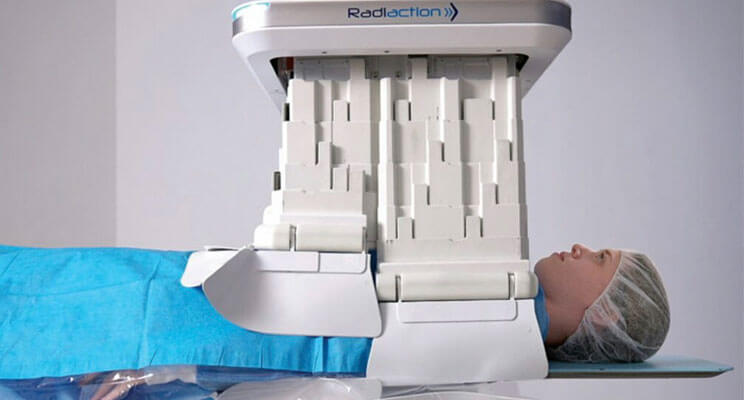Radiaction Medical’s mission is to offer advanced solutions for physicians and clinical staff to better protect them from the debilitating health effects caused by fluoroscopic scatter radiation and orthopedic issues brought on by prolonged wear of heavy protective gear. We’ve been gratified lately to see more players joining the industry in search of better protection for caregivers. New thinking and new approaches are what will ultimately solve this problem, and the more minds we have focused on it, the sooner we’ll reach our goal. For too long, in a specialty defined by high technology, our top-line medical workers have suffered from insufficient radiation protection, as well as excessively heavy and bulky protective apparel.
While it is promising that this industry is proactively looking for new solutions, some have claimed that the latest radiation-blocking technology allows vulnerable workers to shed 100% of their heavy lead vests. This is concerning because it ignores both existing state-mandated lead shielding requirements and the pressing need for more data points on scatter radiation protection.
Clearly, we all have a responsibility to temper our enthusiasm and protect our credibility by supporting our claims with rigorously acquired scientific evidence. After nearly a decade of research, development, and deployment experience with our radiation protection system, we've arrived at this assessment: no existing radiation-blocking technology works so well that we can safely advise catheterization lab staff to fully remove their wearable lead shielding during procedures. We believe assertions to the contrary are premature and could lead to unwanted outcomes.
The newest vanguard of advanced radiation shielding technologies may one day render wearable lead obsolete, but for now, they offer modest gains to significantly lighten the load. Radiaction's system blocks scatter radiation at the source, protecting everyone in the room without compromising safety, functionality, workflow, image quality, or patient access. Preclinical studies have shown that it may allow the safe reduction of worn lead by up to 75%, potentially saving the wearer up to 15 pounds. Craig Walker, MD, explains, “There’s a pain factor that comes with wearing heavy lead aprons for long procedures, not to mention a general level of discomfort and lack of mobility caused by this apparel. By blocking radiation at the source, cath lab staff will have much less need to move about the room and frequently adjust the radiation shield. I believe Radiaction's system affords us an opportunity not only to reduce the harmful risks of scatter radiation exposure but it may also allow adequate protection with lighter personal protection gear, lessening the risk of future orthopedic problems, a promising development for the whole cath lab.”
It's a good sign that scatter radiation protection is gaining traction and has begun to achieve a critical mass in the minds of device manufacturers and healthcare workers alike. We believe the time is right to push hard for positive change — to raise the level of awareness along with an industry-wide revolution in innovative technologies to protect our highly skilled, hands-on caregivers. With discipline as our restraint and science as our guide, we should move as fast as we can toward better solutions, but not so fast that we ignore common sense protections and existing guardrails. Rather than an urgent rush to eliminate wearable lead shielding, a more cautious approach can yield significant benefits without raising the risk: we can simply lighten the load.
To that end, Radiaction Medical's CEO, Jonathan Yifat, had this to say:
"We've begun a social media campaign called #LightenTheLoad to shine a spotlight on this issue. It will help our customers understand that we see and hear their concerns about scatter radiation and their need to be freed from the burden of heavy protective apparel — but we won't risk giving them unproven advice. With more time and research, a safe, lead-free future is likely. But for now, let's focus on lightening the load."

